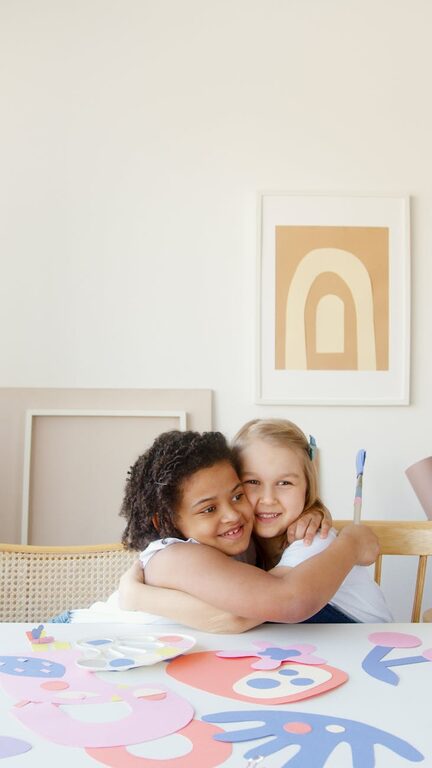Bringing home your child’s artwork can be a wonderful way to celebrate creativity and capture precious memories. However, when every drawing, painting, or craft project piles up, it can quickly become overwhelming to manage. Organizing kids’ art not only helps keep your living space tidy but also makes it easier to find and enjoy these special creations over time.
In this post, we’ll explore practical and fun tips to help you keep your children’s art organized while preserving the joy of their creativity.
Why Organizing Kids’ Art Matters
Kids’ artwork is more than just paper and paint — it reflects their growth, imagination, and milestones. When left unorganized, art piles can lead to clutter, damaged projects, and even lost memories. Organizing art helps you:
– Keep your home clutter-free
– Protect and preserve artwork
– Encourage your child’s creativity and pride in their work
– Easily share and display art for family and friends
Create a Designated Art Storage Area
The first step in organizing art is to give it a “home.” Setting up a dedicated space for artwork helps contain the collection and makes it easier to sort through.
Suggested storage options:
– Plastic storage bins: Transparent bins are great for stacking and offer visibility.
– Filing cabinets or portable file boxes: Use hanging folders labeled by child or date.
– Art portfolios: Portfolio cases are ideal for large or delicate pieces.
– Storage drawers: Rolling carts with drawers can hold materials and finished projects side by side.
Choose a storage solution that fits your space and is easy for both you and your child to access.
Sort Art Regularly
Art projects can accumulate quickly. Set aside time monthly or seasonally to review new pieces and decide what to keep, store, or recycle.
Sorting tips:
– Keep the favorites: Select artwork that is meaningful, represents a milestone, or shows progress.
– Photograph or scan bulky or 3D art: If you want to keep memories without taking up physical space.
– Recycle or gift: Consider recycling older pieces or gifting some to relatives who would appreciate them.
Involving your child in this process can help them learn decision-making and value their own creations.
Use Digital Solutions to Save Space
Digitizing kids’ art is a modern way to preserve memories while reducing physical clutter.
How to digitize artwork:
– Use your smartphone or camera to take photos under good lighting.
– Scan flat pieces with a home scanner for higher quality.
– Organize digital files by date or theme in folders on your computer or cloud storage.
– Consider creating digital photo books or slideshows as gifts or keepsakes.
This method also allows you to easily share artwork with distant family and friends.
Display Artwork Creatively
Showcasing your child’s art can boost their confidence and brighten up your home. Rotating displays keep the space fresh and organized.
Display ideas:
– Art wire or string display: Hang a wire or string on the wall and use clips to hang artwork.
– Corkboards or magnetic boards: Easy to swap pieces as new creations come in.
– Frames with interchangeable mats: Change the artwork regularly, keeping the look tidy and professional.
– Create an art wall or gallery: Dedicate a section of a room to display multiple pieces.
Make sure the displays are child-friendly so kids can participate in updating their gallery.
Label and Date Each Piece
Adding labels with dates and descriptions helps you track your child’s progress over time and makes sorting easier later on.
Try using:
– Pencil or pen labels on the back of the artwork
– Small sticky notes or tags
– Digital notes or metadata when digitizing
Encourage your child to write the title or story behind their artwork for added meaning.
Make Art Organization a Family Activity
Organizing kids’ art doesn’t have to be a solo chore. Make it a fun family project to review, sort, and display art together.
Benefits include:
– Spending quality time bonding over creativity
– Teaching kids about organization and decision-making
– Celebrating achievements and milestones regularly
Try scheduling this as a weekend activity or part of your family routine.
Repurpose Art into Gifts and Keepsakes
Instead of storing every piece indefinitely, you can creatively repurpose some projects:
– Turn drawings into greeting cards or gift tags
– Use artwork to wrap presents
– Create calendars or mugs featuring scanned art
– Make collages or scrapbooks with smaller pieces
This gives new life to the art and spreads joy to others.
Tips for Managing Excess Art Long-Term
If your child is especially prolific, the volume of artwork can grow rapidly. To maintain a balance:
– Limit the number of pieces saved per month or per child
– Encourage your child to choose their top favorite creations
– Keep a “current display” area and rotate pieces regularly
– Use digital archiving as your primary method for long-term storage
Remember, the goal is to celebrate creativity without letting it overwhelm your home.
—
By incorporating these straightforward tips, parents can keep kids’ art organized in a way that respects both the memories and the need for a tidy living space. With a little planning and creativity, your child’s masterpieces can continue to inspire without causing clutter. Happy organizing!

